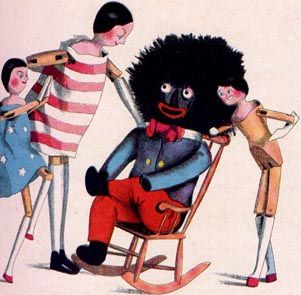History of Golliwogg
Golliwogg is a type of rag doll. It is also known as golliwog or golly. It is made from black fabric and has black eyes bordered with white, red lips with white teeth and curly hair.
Inspiration for gollywog dolls came from Florence Kate Upton, who was born in 1873 in Flushing, New York, and was the daughter of English parents. Her father died when she was 14, and she moved back to England. To afford art school, she illustrated the book “The Adventures of Two Dutch Dolls and a Golliwogg.” It was a children’s book with a character named Golliwogg who looked scary but was a positive character. Inspired by blackface minstrels, he had black skin, red lips, and curly hair and was dressed in traditional minstrel cloth.
Golliwogg proved very popular, and the book sold very well in England, along with its sequels. Similar dolls and images started carrying the name gollywog because of that popularity and because Florence did not patent the name. This made the doll a popular children’s toy during a large part of the 20th century. Its fame was so wide that it spread to advertising and other selling items like children's china and other toys, ladies' perfume, and jewelry. James Robertson & Sons, a British jam factory, used Gollywog as a mascot from 1910 until 2001. “Blackjack” - aniseed candy made in the United Kingdom used gollywog’s face from the 1920s until the 1980s.

It has been portrayed in different forms of media, including comic strips and animated television series. It has even appeared in the works of renowned authors like Enid Blyton, where the character was featured more positively as a kind and brave figure.
Its name is derived from a combination of the words "golly" and "pollywog," an old term for a tadpole. One theory of the origin of the name “Golliwogg” says that while British soldiers held Egypt in the second half of the 19th century, Egyptian laborers worked for them. Workers wore the insignia W.O.G.S. on their armbands, meaning “Working on Government Service.” British troops called them “ghouls” - an Arabic word for a desert ghost. Egyptian children played with black dolls, which they sometimes gave to British soldiers or bought dolls from children. That dolls were later called “Ghuliwogs” and later “Golliwogg.” How much truth is in this theory - is not known.
“Golliwogg” doll in time became very controversial. While some see it as part of tradition and childhood, others see it as racist. That is why they started disappearing from shops and advertisements, but they can still be found online. There is the possibility that “golliwogg” evolved into “wog, " a racial slur applied to dark-skinned people.
